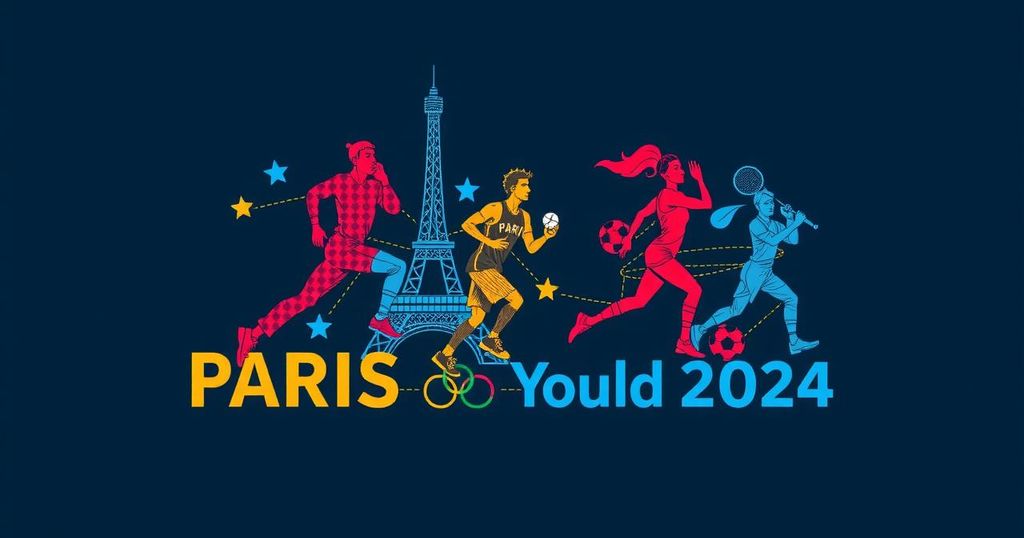Innovative Design: The Cultural Significance of the 2024 Paris Olympics Logo
Summary
The 2024 Paris Olympic Games logo, designed by Sylvain Boyer and his small team, is the first Olympic emblem to feature a woman’s face. This design choice symbolizes a shift towards greater representation of women in sports, inspired by Boyer’s daughter. Incorporating elements like a gold medal, flame, and Marianne, the logo aims to convey the message that beauty and strength coexist in athletics. Boyer’s team, with diverse backgrounds, emphasized collaboration and cultural exchange while creating the logo, reflecting the evolving role of gender in sports. The design process was lengthy, involving multiple revisions and insights into women’s increasing participation in the Olympics.
In a remarkable achievement, a small design company led by Sylvain Boyer has secured the prestigious opportunity to create the emblem for the 2024 Paris Olympic Games. This logo, notable for being the first in Olympic history to showcase a woman’s face, symbolizes a momentous shift in representing gender within the realm of sports. Boyer’s inspiration for this innovative design was partly drawn from personal experiences with his daughter, who expressed frustration at the lack of space for girls to partake in sports at her school playground. This poignant observation prompted Boyer to conceptualize a figure that embodies the Olympic spirit while also reflecting femininity. The logo features three distinct elements: a gold medal, a flame representing ancient Greece, and the figure of Marianne, emblematic of the French Republic. Together, these components are presented in a circular format, with the gold medal silhouette symbolizing athletic achievement and the flame symbolizing Olympic prowess. The design process, initiated in 2018, involved numerous revisions, with Boyer’s team striving to simplify and clarify the message of femininity in sports. An important survey conducted revealed a significant increase in women’s participation in the Olympics, which Boyer brought to the attention of the Olympic Committee to strengthen the case for their design. Despite their modest size, with only twenty employees, Boyer’s team thrived under a creative process that empowered voices from diverse backgrounds, including international team members from China. Although they never anticipated winning the competition, the team’s passion and commitment to sharing their vision ultimately resonated with the Olympic Committee. The final presentation encapsulated both artistic and conceptual significance, concentrating on the transformative message intended for global audiences. Boyer articulated an essential principle that transcends mere aesthetics: “Beautiful is Boring,” underlining the belief that a symbol should convey deeper meanings through its design.
The 2024 Paris Olympic Games logo represents a significant cultural moment, reflecting the evolution of female representation in sports and the importance of inclusivity in global events. In recent years, the role of women in the Olympic Games has dramatically increased, culminating in nearly half of the athletes at the Tokyo Olympics being female. This shift in balance necessitates a logo that stands as a testament to this progress. Sylvain Boyer’s design not only acknowledges this shift but also aims to inspire future generations to embrace equality in sports. Furthermore, the collaboration between Chinese and French team members fosters cultural exchange, showcasing the global nature of the Olympics and emphasizing shared values across borders.
In conclusion, the journey of Sylvain Boyer and his design team to create the logo for the 2024 Paris Olympic Games underscores the transformative power of creativity and cultural exchange. Their innovative emblem, which uniquely features a woman’s face, signals a progressive acknowledgment of women’s roles in sports and reflects a commitment to inclusivity. By bridging influences from both French and Chinese cultures, the design encapsulates a global spirit that aims to inspire change and foster unity among nations through the Olympics. This emblem serves not only as a visual identity for the games but also as a beacon of progress and empowerment in the sporting world.
Original Source: www.ecns.cn








Post Comment